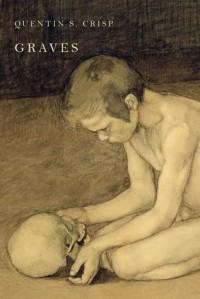
Graves

This book shook me to my core, and has definitely become one of my favorites. It's brimming with intelligent writing and perfectly Gothic flowery language. Crisp's imagery is deeply affecting, with artful descriptions of decay. There is one passage where he describes the putrefaction of a corpse, and another where he describes a peacefully dusty kind of decay. There's really an enjoyable amount of death/decay exploration throughout the novel, with imagery appealing to every sense.
I found Damien's thoughts on death-in-life and life-in-death very interesting. There was a really great monologue on page 68:
"...so nothing leaves the body. There is only matter. Therefore, if a living body and a dead body are not made different by any magic ingredients, they are the same thing, just like a clockwork toy that is moving is exactly the same as a clockwork toy whose spring has wound down. And therefore, it is not only possible to be dead and living at the same time, but that is unavoidably what we all are. The only thing 'living' can possibly mean is that dead matter moves in a particular way. So living is only something built on top of being dead, or is only a subset of being dead. We are all dead and alive at the same time."
Actually, this book posits a lot of thought-provoking questions, like "Why must we survive? We are we trying to kill ourselves?" As the synopsis says, it confronts the problem of consciousness, but also of the soul and free will. The big questions, basically.
I loved the inclusion of references to dark art and music. Pieces I especially liked were The Old Man and Death (1779) by Joseph Wright, Skeletons Trying to Warm Themselves (1889) by James Ensor, and "Wandering Star" by Portishead.









